If you’re battling hard water woes—think crusty faucets, dull laundry, or itchy skin after a shower—a Hague water softener might just be your household’s new best friend. I’ve lived with one for years, and let me tell you, it’s a game-changer.
From softer towels to happier pipes, this system delivers. In this article, I’ll share my personal experience, break down the pros and cons, offer maintenance tips, and compare Hague to other brands.
By the end, you’ll see why I’m sold on Hague and why you should consider one too.
My Journey With The Hague Water Softener
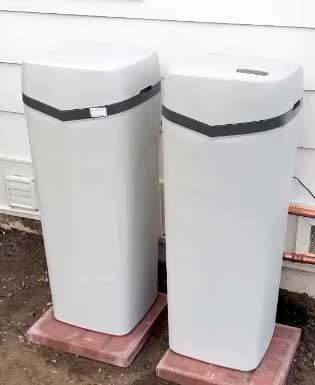
When I moved into my home in Ohio, the water was a nightmare.
My coffee maker looked like it had been through a limestone quarry, and my skin felt like sandpaper after every shower.
A friend recommended a Hague water softener, and I figured it was worth a shot.
I went with the Hague WaterMax Signature Series, installed by a local dealer who tested my water and tailored the system to my household’s needs.
The installation was quick, and the technician walked me through the basics—how to check the salt levels, what the fancy digital controller does, and why my pipes would thank me.
The first thing I noticed was the water itself. It tasted cleaner, almost crisp, like bottled water straight from the tap. My dishes came out of the dishwasher spotless, no more cloudy glasses or water stains. My laundry?
Softer than ever, and I swear my towels feel like they belong in a spa. Even my hair, which used to feel like straw after washing, got smoother. The system’s three-chamber design tackles hardness, chlorine, and even some sediment, which was a big deal since we’re on city water with its own quirks.
I’ve been using it for three years now, and the difference is night and day. Sure, it wasn’t cheap, and I’ve had to learn a thing or two about upkeep, but the benefits? Totally worth it. I’ll get into the nitty-gritty—er, I mean, the details—below, but trust me, this thing has made my home a better place to live.
The Pros of Owning A Hague Water Softener
Let’s talk about why I’m such a fan of my Hague system. It’s not just about softer water; there’s a lot going on under the hood that makes this thing stand out. Here’s what I love.
- Unmatched Efficiency
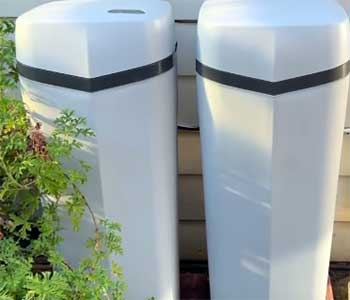
Hague’s WaterMax is a beast when it comes to saving resources.
It uses 50% less salt and 80% less water during regeneration compared to traditional softeners.
That’s not just good for your wallet; it’s a win for the environment too.
I noticed my salt refills last way longer than I expected—sometimes months—because of the system’s “Absolute Brining” feature. It precisely calculates how much salt is needed, so there’s no waste. My water bill hasn’t spiked, and I’m not constantly lugging salt bags from the store.
- Customizable to Your Needs
One size doesn’t fit all, and Hague gets that. The WaterMax’s three-chamber design lets you tailor the system to tackle specific water issues. Got high iron in your well water? They can add a filter for that. Dealing with chlorine taste from city water?
There’s a chamber for that too. When my dealer tested my water, they tweaked the settings to handle our slightly high calcium levels and some sediment. The Smart Touch Controller makes it easy to adjust settings, and I love that it remembers my preferences even during power outages.
It’s like having a water softener that’s custom-built for my home.
- Space-Saving Design
I don’t have a sprawling basement, so the compact design of the Maximizer 97MM was a lifesaver. Unlike those bulky dual-tank systems, this one fits neatly in a corner. The vacuum-packed resin maximizes softening power without taking up half the room.
If you’re tight on space, this is a huge plus. I’ve got mine tucked next to the water heater, and it’s barely noticeable. Plus, the salt tank is easy to fill without wrestling with heavy bags, thanks to the option for salt tablets or blocks.
- Long-Lasting Durability
Hague’s been in the game since the 1950s, and their systems are built like tanks. My WaterMax came with a 25-year limited warranty on some parts, which gave me peace of mind.
The fine mesh resin beads are designed to handle hard water better than standard beads, and the upflow regeneration system prevents channeling (when water carves inefficient paths through the resin).
Three years in, my system’s still running like it’s brand new, and I haven’t had to replace anything major. That’s more than I can say for some of my other appliances.
- Health and Home Benefits
Soft water isn’t just about luxury—it’s practical. My skin doesn’t feel like it’s been through a desert after a shower anymore, and my wife swears her eczema flares up less. Our appliances, like the dishwasher and washing machine, are running smoother with no scale buildup.
I’ve even noticed I use less soap and detergent because soft water lathers better. It’s little things like that that add up, making the whole house feel cleaner and more efficient.
The Not-So-Good Parts of Hague Water Softeners
No product’s perfect, and I’d be lying if I said my Hague system was flawless. There are some downsides you need to know about before you commit.
- High Upfront Cost
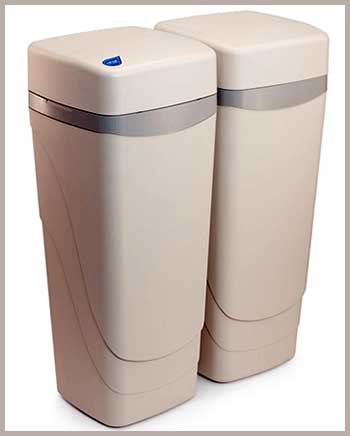
Let’s not sugarcoat it: Hague systems are pricey.
Mine set me back a couple of thousand dollars, and that’s before installation.
Compared to a basic softener from a big-box store, which might cost $600–$1,200, Hague’s premium price tag stings.
I justified it because of the efficiency and warranty, but it’s a tough pill to swallow if you’re on a tight budget.
Financing options helped, but you’re still looking at a significant investment upfront.
- Dealer-Only Maintenance
Here’s where things get tricky. Hague systems use proprietary parts and valves, so you can’t just call any plumber if something goes wrong. You’re locked into working with authorized Hague dealers, and in my area, there’s only one.
When I needed a minor fix (a leaky fitting), the dealer charged $200 just to show up. Compare that to a Fleck or Whirlpool system, where parts are widely available, and any plumber can handle repairs. It’s not a dealbreaker, but it’s inconvenient, especially if you live somewhere rural with no dealers nearby.
- Mixed Customer Service Experiences
My dealer’s been great, but I’ve heard horror stories from others. Some folks on Consumer Affairs and BBB complained about unresponsive dealers or parts not covered under the “25-year warranty” (like the digital controller, which only gets five years).
I haven’t had major issues, but when I called Hague’s main office with a question, it took a week to get a response. If you’re considering Hague, vet your local dealer carefully—they’re your lifeline for service.
- Space Concerns for Some Models
While my Maximizer 97MM is compact, other Hague models, like the 410 Maximizer, can be bulky. If you’ve got a small utility closet, you might struggle to find room. I know a neighbor who had to rearrange their basement to fit a larger model.
It’s not a universal issue, but check the dimensions before you buy, especially if space is tight.
- Occasional Performance Hiccups
My system’s been reliable, but I’ve read reviews from users with well water who struggled with high iron levels overwhelming their Hague softener. One guy mentioned black resin beads clogging his faucets, which sounds like a maintenance nightmare.
My city water doesn’t have those issues, but if you’re on a well with extreme hardness (say, 350–450 ppm), you might need extra filtration add-ons, which add to the cost.
Maintenance Tips To Keep Your Hague Water Softener Running Smoothly
Owning a Hague system is like owning a car—it needs regular TLC to perform at its best. Here’s how I keep mine in tip-top shape.
- Keep the Salt Tank Full
The number one rule: don’t let your salt tank run empty. I check mine every month or so, and it’s usually fine for weeks thanks to the efficient brining system. Use high-quality salt pellets or tablets—avoid the cheap rock salt that can leave sediment.
I keep a couple of 40-pound bags in the garage, and I fill the tank when it’s about a quarter full. The salt window on my WaterMax makes it easy to see when it’s getting low.
- Clean the Resin Tank Annually
Hague’s fine mesh resin is durable, but it can get gunked up with sediment or iron over time. I clean mine once a year by running a resin cleaner (available from my dealer) through the system. It’s a simple process: pour the cleaner into the brine tank, run a manual regeneration cycle, and let the system do its thing.
This keeps the resin beads working efficiently and prevents channeling. If you’re on well water, you might need to do this more often.
- Check the Pre-Filter Regularly
The WaterMax’s built-in pre-filter is a lifesaver, catching dirt and sediment before it hits the resin. I check mine every six months to make sure it’s not clogged. If it’s looking dirty, I run a backwash cycle (the controller makes this easy).
Some models don’t have replaceable filters, which is great for cost but means you need to stay on top of backwashing to keep things flowing smoothly.
- Monitor Water Pressure
Low water pressure can signal a problem, like a clogged filter or a valve issue. I noticed a slight drop in pressure once, and it turned out to be a sediment buildup in the pre-filter. A quick backwash fixed it.
Keep an eye on your faucets and appliances—if things feel sluggish, run a diagnostic through the Smart Touch Controller or call your dealer. Catching issues early saves you from bigger headaches.
- Schedule Professional Tune-Ups
Hague recommends a professional checkup every year or two, and I’ve found it’s worth the cost. My dealer inspects the valves, checks for leaks, and tests the water hardness to ensure the system’s dialed in. It’s about $150 a visit, but it’s cheaper than replacing parts down the line.
If you’re handy, you can handle basic maintenance yourself, but a pro can spot issues you might miss.
- Protect Against Power Outages
The Smart Touch Controller saves your settings during power outages, but I still plug my system into a surge protector. A power spike fried my neighbor’s softener electronics, and it wasn’t cheap to fix.
If you live in an area with frequent outages, consider a backup battery for the controller to keep things running smoothly.
How Hague Stacks Up Against Other Brands?
Picking the right water softener is like choosing the perfect pair of shoes—it’s got to fit your needs and last. I’ve been using my Hague WaterMax for three years, and I’ve researched how it stacks up against Sterling, Genesis, Northstar, and ScaleBlaster.
Below, I break down each comparison, looking at efficiency, customization, durability, cost, maintenance, and performance for hard water. Let’s see how Hague holds up against each competitor.
Hague Vs. Sterling
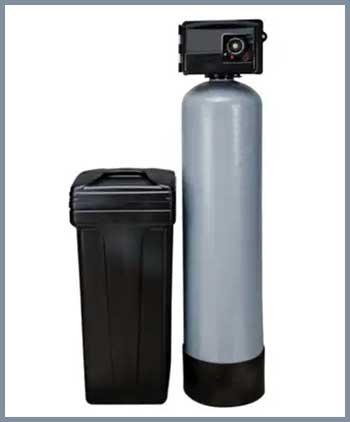
- Efficiency and Resource Use: Hague’s WaterMax saves me a ton with 50% less salt and 80% less water during regeneration, thanks to its Absolute Brining feature. My salt tank lasts months. Sterling’s SWS1-HE cuts salt use by 33% compared to standard models, but its water savings don’t match Hague’s.
- Customization and Features: Hague’s three-chamber design lets my dealer tweak it for my city water’s high calcium. The Smart Touch Controller is user-friendly for adjustments. Sterling’s FS series has a solid display and nitrate-specific resins, but it lacks Hague’s multi-chamber flexibility.
- Durability and Warranty: My Hague’s fine mesh resin and upflow regeneration feel bulletproof, backed by a 25-year limited warranty (five years on the controller). Sterling’s Clack WS-1 valves last 10–20 years, but their 5–10-year warranties are shorter.
- Upfront and Ongoing Costs: Hague cost me $2,000–$3,000 installed. Sterling’s 48,000-grain models run $2,000–$2,800, with pricier repairs due to proprietary parts. Hague’s efficiency keeps ongoing costs low.
- Maintenance and Service: I check Hague’s salt monthly and clean the resin yearly, but repairs need a dealer ($200 for a leaky fitting). Sterling’s Clack valves use standard parts, making DIY fixes easier.
- Performance for Hard Water: Hague handles my 10–15 gpg water perfectly—spotless dishes, soft skin. Sterling’s HEX series manages up to 20 gpg but isn’t as versatile for other contaminants.
Hague Vs. Genesis
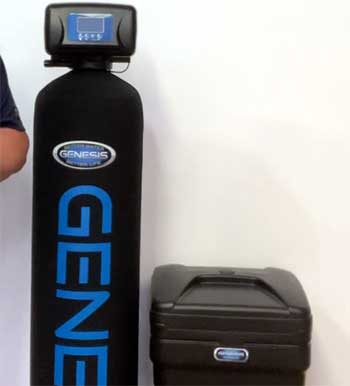
- Efficiency and Resource Use: Hague’s Absolute Brining is top-notch, saving 50% salt and 80% water. Genesis 2 Upflow Premier uses 45% less salt and 64% less water than downflow systems, making it a close competitor.
- Customization and Features: Hague’s three-chamber setup is tailored to my water’s quirks, with an intuitive controller. Genesis 2’s digital control is precise but limited to single-tank functionality, missing Hague’s versatility.
- Durability and Warranty: Hague’s 25-year warranty is solid, and my system’s still like new. Genesis 2’s lifetime valve and tank warranty beats Hague, with a ceramic disc valve that avoids wear.
- Upfront and Ongoing Costs: Hague’s $2,000–$3,000 price stings. Genesis 2, at $1,200–$2,000, is a better deal, with low salt costs thanks to its efficiency.
- Maintenance and Service: Hague’s maintenance is simple but dealer-dependent. Genesis 2 needs less upkeep, and its non-proprietary parts make repairs cheaper and easier.
- Performance for Hard Water: Hague excels at 10–15 gpg, keeping my home scale-free. Genesis 2 handles up to 15 gpg well, with upflow regeneration preserving resin life.
Hague Vs. Northstar
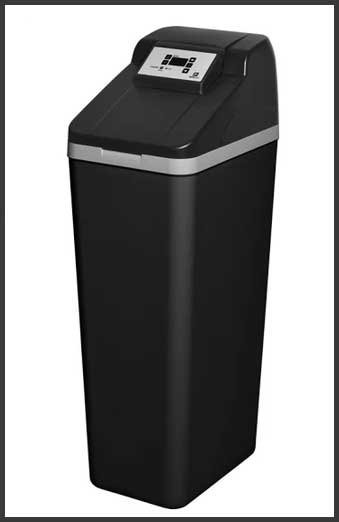
- Efficiency and Resource Use: Hague’s salt and water savings are unmatched. Northstar’s NSC40UD1 single-tank model uses more salt for its 39,000-grain capacity, and the dual-tank NST30ED isn’t much better.
- Customization and Features: Hague’s customizable chambers and controller are a dream. Northstar’s NSC22 has basic diagnostics and a turbine meter but lacks add-ons for complex water issues.
- Durability and Warranty: Hague’s durability and 25-year warranty shine. Northstar’s NSC40UD1 has mixed reviews, with some failing after two years, and its warranty is weaker.
- Upfront and Ongoing Costs: Hague’s $2,000–$3,000 is steep. Northstar’s NSC22 costs $1,000–$1,500, but higher salt use increases ongoing expenses.
- Maintenance and Service: Hague’s dealer-only repairs are a hassle. Northstar’s single-tank models need frequent salt refills, and technical support can be spotty.
- Performance for Hard Water: Hague tackles my hard water flawlessly. Northstar struggles above 15 gpg, with some users reporting inconsistent softening.
Hague Vs. ScaleBlaster
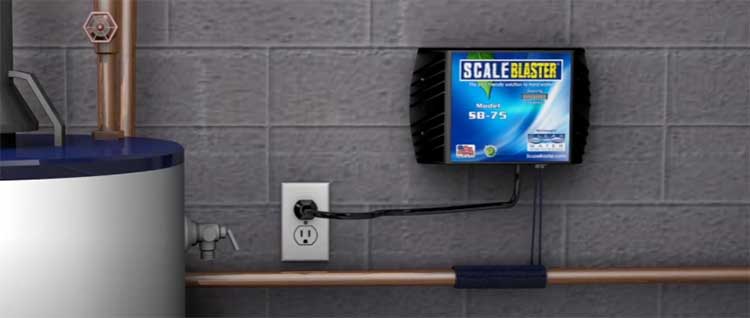
- Efficiency and Resource Use: Hague’s brining system saves resources. ScaleBlaster, a salt-free conditioner, uses no salt or water but doesn’t soften—it just reduces scale.
- Customization and Features: Hague’s tailored chambers handle my water’s issues. ScaleBlaster’s one-size-fits-all electronic box doesn’t filter or soften, limiting its utility.
- Durability and Warranty: Hague’s robust build and long warranty are reliable. ScaleBlaster claims durability, but its effectiveness is questionable, and warranties vary by retailer.
- Upfront and Ongoing Costs: Hague’s upfront cost is high. ScaleBlaster’s SB-75 is only $200–$400, but it doesn’t deliver soft water, so savings are misleading.
- Maintenance and Service: Hague needs regular upkeep and dealer repairs. ScaleBlaster claims zero maintenance, but if it fails to reduce scale, you’re out of luck.
- Performance for Hard Water: Hague transforms my hard water. ScaleBlaster didn’t work for my neighbor—limescale persisted after a month.
Hague’s customization and efficiency make it my top pick, though Genesis is a strong value option. Sterling’s reliable but less flexible, Northstar’s budget-friendly but inconsistent, and ScaleBlaster’s not a true softener. For my home, Hague’s the clear winner.
Frequently Asked Questions (FAQ)
Hague water softeners are built to last, often 15–20 years with proper maintenance. My WaterMax has been running flawlessly for three years, and I know someone with a Hague system from 1993 that lasted over 20 years. The 25-year limited warranty on major parts like the resin tank helps, but the digital controller only gets five years. Regular upkeep, like keeping the salt tank full and cleaning the resin, is key to hitting that lifespan.
Hague water softeners are proudly made in the USA, specifically in Groveport, Ohio. The company’s been family-owned since the 1950s, and they manufacture hospitable manufacturing locally. I love that it’s American-made—it feels like a vote for quality and durability.
Hague systems vary in price, but expect to pay $2,000–$4,000 for a WaterMax or Maximizer, including installation. My WaterMax Signature Series was on the higher end, but financing options brought it down to manageable monthly payments. For exact pricing, contact a local Hague dealer for a free quote—they’ll test your water and give you a tailored estimate. Check x.ai/grok for more details.
I don’t have specific pricing for Culligan, as it depends on the model and financing terms. Typically, Culligan systems cost $2,000–$4,000 upfront, with monthly payments around $50–$100 if financed. For accurate costs, check with a Culligan dealer or visit help.x.com/en/using-x/x-premium for more info. My Hague’s efficiency has saved me enough on salt and water to offset its higher cost over time.
Why You Should Get A Hague Water Softener?
After three years with my Hague WaterMax, I can’t imagine going back to hard water. It’s transformed my home—cleaner dishes, softer clothes, happier skin, and appliances that actually last.
Sure, the price and dealer-only maintenance aren’t ideal, but the efficiency, customization, and durability make it worth every penny. If you’re tired of scale buildup and lackluster water, invest in a Hague system.
It’s a decision you’ll thank yourself for every time you take a shower or sip a glass of water. Trust me, your home deserves this.
